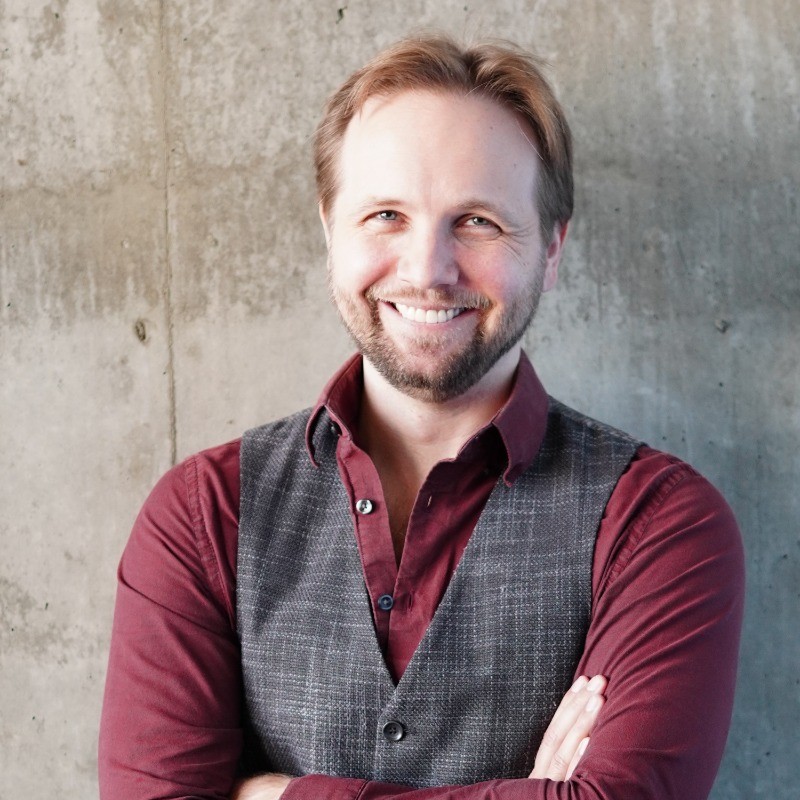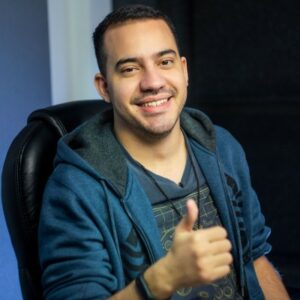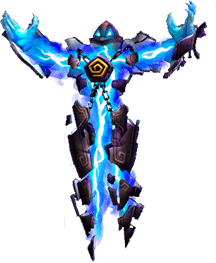Video Game Mechanics Fundamentals
This program covers the nuances of game mechanics and their integration with other components to shape player interactions.
You’ll develop a framework to analyze, contextually re-use, and design mechanics from scratch.
18
Video lessons
6
Months of instructor feedback
6+
Hours of Content
14
Days money-back guarantee
Program Overview:
This self-paced program provides daily instructor feedback and weekly live mentorship for 6 months to help you master game mechanics and develop a framework for designing deep and enjoyable gameplay from scratch.
You’ll apply your learning through practical drills, case studies, and workshops to tackle real-world studio challenges.
If you have your own game project, these exercises can directly improve it.
You’ll also be part of a community of 1820+ game devs from all seniority levels, where you can:
- Share projects or your portfolio for review
- Get feedback when stuck
- Discuss and bounce ideas
You’ll also acquire a proven AAA framework to design, iterate, and repurpose mechanics, enabling you to craft player experiences that align with your game systems and reinforce the core game loop.
You'll have the skills to:
- Effectively break down game mechanics, understanding the distinctions between inputs, verbs, interactions, and mechanics.
- Plan new mechanics, utilizing the universal game mechanic description format to visualize them.
- Identify and apply abstract design patterns across different games and genres.
- Understand the purpose behind resource systems and how they connect to design intent.
- Differentiate between shallow, deep, narrow, and broad game mechanics and know how to improve them.
Learn from Industry experts
Experience: 25 years
Studios: Blizzard, Riot, Moon Studios
Consulting: Shipped over 32 projects
Games: World of Warcraft, League of Legends, Ori and the Will of Wisps, and No Rest for The Wicked
- Warlock Class Overhaul in Mists of Pandaria (WoW)
- Built the Pet PvP System from scratch
- Reworked Xerath (LoL)
- Revamped the warding system & passive income for the supports (LoL)
- Work on weapon designs, spells, shards and UI (Ori and the Will of the Wisps)
- Fundamental game design for No Rest of the Wicked (All gameplay systems)
Contributing Experts

Celia Wagar (LinkedIn)
Celia Wagar is a multidisciplinary expert with a combination of Fortune 500 enterprise coding skills, and a strong knowledge of video game design specifically in mechanics, balance, and systems.

Celia Wagar (LinkedIn)
Celia Wagar is a multidisciplinary expert with a combination of Fortune 500 enterprise coding skills, and a strong knowledge of video game design specifically in mechanics, balance, and systems.

Joseph Sopko (LinkedIn)
Joe has 10 years of experience in combat and gameplay design. He has worked on Ashen (A44 Games), No Rest for the Wicked (Moon Studios) and Concord (Firewalk Studios.)

Joseph Sopko (LinkedIn)
Joe has 10 years of experience in combat and gameplay design. He has worked on Ashen (A44 Games), No Rest for the Wicked (Moon Studios) and Concord (Firewalk Studios.)
Instructors worked and contributed to:
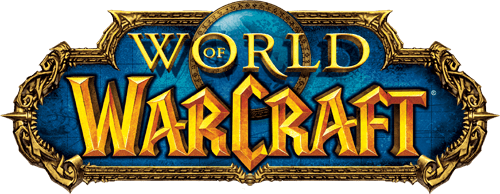

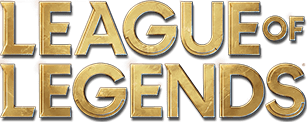

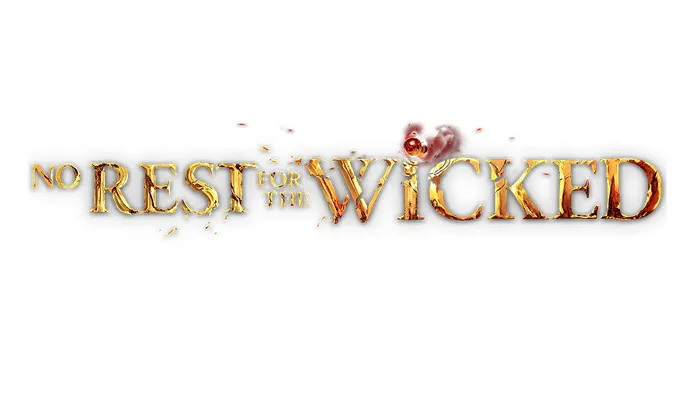

This Program includes:
18 lessons | 6+ hrs of content
Lifetime access and updates
Weekly live office hours
6 months of direct access to instructors
Community with 1820 devs
Design drills and workshops
Course Certificate
14-days money-back guarantee
What you'll learn:
Lessons & Frameworks
1. Depth
- What is depth and how does it work?
- Analyze the 3 Tiers of Depth
- The Game Elegance Formula
- 3 Step-Process for Designing Elegant Gameplay
- Advanced Optimizations to Expand Relevant Depth
- Player Choice Optimization Framework
Workshop :
- We’ll map out the game mechanics of “No Rest For the Wicked” style game together
Drills:
- 8 Drills
Examples:
Part 2: Game mechanics
- Universal Game Mechanics Description Framework
- Game Mechanics: How Do They Shape Player Experience
- The Hidden Nuances of Game Mechanics
- The 6 Qualities of Deep Mechanics & Player Tools
- How to Plan Mechanics, Tools, Situations, and Consequences
- 6 Techniques to Empower Players to Master Your Mechanics
- The 4 Key Context Types that Impact Game Mechanics
- 8 Design Tools to Streamline Your Gameplay
- Resources & Resource Flow in Game Mechanics
- 3 parts of a resource system
Workshop :
- We’ll map out the game mechanics of “No Rest For the Wicked” style game together
Drills:
- 8 Drills
Examples:
- A comprehensive list of best 45 games to study about game mechanics in their respective genres.
- Examples from former participants
Part 2: Game tools
- Universal Game Mechanics Description Framework
- Game Mechanics: How Do They Shape Player Experience
- The Hidden Nuances of Game Mechanics
- The 6 Qualities of Deep Mechanics & Player Tools
- How to Plan Mechanics, Tools, Situations, and Consequences
- 6 Techniques to Empower Players to Master Your Mechanics
- The 4 Key Context Types that Impact Game Mechanics
- 8 Design Tools to Streamline Your Gameplay
- Resources & Resource Flow in Game Mechanics
- 3 parts of a resource system
Workshop :
- We’ll map out the game mechanics of “No Rest For the Wicked” style game together
Drills:
- 8 Drills
Examples:
- A comprehensive list of best 45 games to study about game mechanics in their respective genres.
- Examples from former participants
Part 2: Game mechanics
- Universal Game Mechanics Description Framework
- Game Mechanics: How Do They Shape Player Experience
- The Hidden Nuances of Game Mechanics
- The 6 Qualities of Deep Mechanics & Player Tools
- How to Plan Mechanics, Tools, Situations, and Consequences
- 6 Techniques to Empower Players to Master Your Mechanics
- The 4 Key Context Types that Impact Game Mechanics
- 8 Design Tools to Streamline Your Gameplay
- Resources & Resource Flow in Game Mechanics
- 3 parts of a resource system
Workshop :
- We’ll map out the game mechanics of “No Rest For the Wicked” style game together
Drills:
- 8 Drills
Examples:
- A comprehensive list of best 45 games to study about game mechanics in their respective genres.
- Examples from former participants
Live recording of the original bootcamp workshop session.
A few more results from our members

Miles Butler
Indie Game Developer
LinkedIn
My learning experience at my undergraduate degree was akin to being thrown to the wolves, the lessons focused on basic instructions like how to achieve X or Y in Unity.
There was little guidance on what thought process behind why certain design decisions were made.
After the program, I have a clear understanding of how I want to assemble my ideas, structure them, and work more efficiently towards any game I decide to create.

Crow Tomkus
Narrative Designer at Big Blue Sky Games
LinkedIn
When I first started learning game design, I found out that I can only learn so much about design from playing games by myself.
After I joined, I picked up Alex’s practical philosophy of design that I can apply to everything from the narrative to the music to the user experience of the game itself.
Now I’m working full time as a junior narrative designer at Big Blue Sky Games.

Jonathan Alcontin
Tilting Point's Lead Game Designer
LinkedIn
After going through Alex’s course and mentorship, I’ve refined how I articulate my design insights, strengthened my bond with my teammates, and solidified my overall skill set as a design lead.
I’ll always be thankful for the lessons I’ve learned from Alex.
Whether you’re a new designer looking to learn industry best practices or an experienced veteran who desires to sharpen your current skills, his courses will help you become a stronger designer.

Malcolm Yeo
Community Representative at Square Enix America
LinkedIn
I’ve known Xelnath from Riot — and read his blog prior — so when I saw the program, pretty much knew this was going to be a training with experience/practicality behind it compared to most others where i don’t really know for sure.
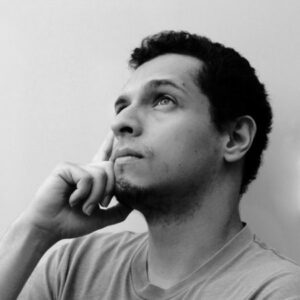
Victor Jesus Arroyo Reyes
Game Developer at Software and Tech
LinkedIn
The most enticing thing about joining First Principles of Game Design is learning game design without having to be an expert on the subject because everyone inside is welcoming and helpful.
My favorite part is the feedback I get for my homework. This is helped me learn the concepts much quicker.

Ses Goe
Indie game dev
LinkedIn
The program was so exciting for me because Alex focused on the most important aspect of video games: the people who play them!
Also the live feedback is very helpful to circumvent time wasters.

Leerer G.
Graphic designer transitioning into game design
For years I searched for a structured video game design course that could guide me into important aspects of making gameplay with real life examples and I finally found it.
I highly recommend this to anyone serious about getting into professional game design!

Elliot M.
Cinematic Designer at Respawn Entertaiment
This program is an excellent foundational game design course. Not only is it a great option for a designer looking to fill in any blind spots they may have, but it’s also a great way for someone looking to level up their skills and to get into game design.
Start building your design skills and portfolio today
- 3 Modules | 18 Videos | 6 Hrs (see results)
- Live weekly office hours for 6 months (examples)
- Design drills and workshops
- Personalized chat feedback for 6 months
- Private Discord channels
- Lifetime access and updates
- Course certification
Common Questions:
Yes, we have a 14-day satisfaction guarantee.
If you’re not satisfied with the program or my mentorship within 14 days of purchase, you can get a full refund—no unnecessary hoops.
I’m NOT here to pressure you to make some rushed decision; I want to make sure:
- You’re a right fit.
- You get what you’re expecting.
Coding & knowing how to use game engines such as Unity, Unreal, etc, are complementary skills for game designers. Therefore, they are not prerequisite skills for joining the program.
Keep in mind that this doesn’t mean you shouldn’t learn how to use game engines as a game designer. It will definitely help improve your chances of getting into a studio.
With that said, you will get more results by implementing what you learned in this program in the medium of your choice.
If you’ve never built anything before, and have zero experience with game engines, you can take our free course Build a Game Challenge, where we provide templates and exact directions to help you build a playable virtual tabletop game prototype from scratch in 6 days.
Then you can apply the learnings from the this program to your tabletop game prototype.
If you don’t put in any effort, you’ll get zero results.
However, assuming you participate fully, here are some example results you can achieve.
Also check out the testimonials from other members to get a better idea what outcome to expect.
First:
You’ll receive an email from me or our Skill Acquisition Coach within 24 hours of enrollment to schedule your onboarding call where we help you set up the following:
- Weekly live group office hour with the instructor
- Private course channel for exercise feedback and interact with the instructor, devs and other members
- Discuss how to tailor the program to reach your goal
If you don’t see an onboarding email within 24 hours of your purchase, then
- Double check your Promotions Tab, Updates Tab, or Spam Folder
- [If you still don’t see the email] Reach out to us at support[at]gamedesignskills.com
Next,
If you paid up front:
Once you purchase, you’ll get immediate access to everything inside the program. Nothing is “dripped out” – you’re free to jump head first into things.
If you split your payment into 3:
You’ll get immediate access to the first half of the program (month 1):
- Modules 1-4
- 3 live office hours
- Chat feedback
- Accountability coach
The moment the second payment goes through, you get immediate access to the rest (month 2):
- Modules 5-8
- Next 3 live office hours
- Chat feedback (continued access)
- Accountability coach (continued access)
The moment the third payment goes through, you get immediate access to the rest (month 3):
- Career Accelerator Bonus
- Board game Prototype Guide
- Iterative Process Checklist
- The next 2 live office hours
- Chat feedback (continued access)
- Accountability coach (continued access)
This program is designed to help you become a game designer, but it’s up to you to follow the program.
Just like a personal trainer can’t go to the gym for you, I can’t make your games for you.
However, I’ll equip you with the tools, resources, and skills you need to succeed and provide guidance and accountability along the way.
So if you do the following things, you’ll get results from this program:
- Take part in the Career Goal and Portfolio Workshops to set your goals, build a portfolio, and create a roadmap to achieve them.
- Attend the live office hours to get personalized mentorship and learn faster.
- Do the practice exercises and drills to turn your knowledge into real design job skills.
- Get hands-on by building game projects, modding, or recreating a part of a popular game to apply what you learn.
- Use the program’s principles and exercises to practice improving the gameplay of your target studio’s games – this will help you pass their design tests and interviews.
- Ask for feedback in Discord to minimize your trial and error.
The program works, and many of our members now work across 51+ studios like Ubisoft, Riot, Bethesda, Blizzard, and many more.
However, it’s up to you to practice and apply what you learn.
I recommend this program to beginners with 0 experience if you meet the following criteria:
- Big passion for games and care about creating games that players will enjoy.
- Willingness to play games outside of your preference to study and improve your design skills.
- Enjoy the process of making games and trying to improve them over time despite the challenges and the effort required.
- Determination to start your game design career(solo dev or in-studio) and understand that you need to take action outside of the program that we cannot do instead of you, such as:
- Build or mod your own games – we can guide you.
- Create your portfolio – we can help you improve it
- Source and apply for entry-level game design jobs.
- Learn how to use a game engine and basic scripting
I recommend that you first check out my start-here guide for complete beginners to see if a career in game design is right for you.
Once you have reviewed the 4 recommended articles and confirmed that you are interested in game design, you can come on over, and we can design some great things together!
Yes, the only difference between Indie developers and those who choose the game designer career path inside a studio is outcome.
As an Indie developer, instead of using the knowledge skills for the end result of getting hired / promoted, you’ll be applying it to directly
- Improve your game experience, which is the leading indicator to player retention and better monetization.
- Improve your team’s collaboration. Even if you’re just working with contractors, you’ll communicate more clearly and efficiently.
- Clarify your vision and communicate with investors (if you’re getting funding).
- Increase the potency of your iteration cycles to get more out of betting with limited resources.
This program contributes to that goal, but the program alone won’t get you hired for other game dev roles, since it doesn’t teach specific role-related skills like coding or 3D modeling.
It specifically teaches game design analysis, decision-making, and communication.
To be more specific, here is how the program compliments non game designer roles:
1. Game Programmer (or Technical Designers) – Helps you interpret designers’ intentions and desired player experiences, so you can help them find better technical solutions and implementation choices for optimal player responsiveness.
2. Game Artist – Helps you see beyond aesthetics and creating art in isolation, considering how your art contributes to the broader story, characters, and overall gameplay experience.
3. Game Producer – Helps you make better decisions, prioritize tasks effectively, and steer the team toward a unified goal, which ultimately results in an engaging and cohesive player experience.
The design skills taught in the program can enhance your appeal as a candidate and your effectiveness as a team member compared to those who only possess role-specific skills.
We have many FPGD members who used this program to get job offers as game producers and programmers.
Here are the genres this program does apply to
| GENRE TYPE | EXAMPLES |
| RPG | Final Fantasy, Dragon Quest |
| MMORPG | World of Warcraft, Everquest, Overwatch, Final Fantasy XI & XIV |
| TACTICAL RPG | Valkyria Chronicles, Orgre Battle |
| SANDBOX RPG | Grand Theft Auto, Deus Ex, Skyrim Elderscrolls, Fallout, Fable |
| ACTION RPG | Diablo 3, Darksouls, Wizard of Legend, Bastian |
| MOBA | League of Legends, Defense of the Ancients |
| STRATEGY | Off World Trading Company, The Banner Saga |
| RTS / RTT | StartCraft 1 & 2, Age of Empire, Warhammer 4k |
| TURN BASED STRATEGY | Civilization, Heroes of Might & Magic, Excyom |
| WAR GAME | Diplomacy |
| 2D – SIDE SCROLLING | Mario brothers, Metal slug, Mega man, Death’s Gambit, Super Meat Boy |
| 2D – METROIDVANIA | Super Metroid, Ori and The Will of The Wisps, Rain World, Hallow Knight |
BOARD & CARD GAMES (Digital & Tabletop) | Monopoly, Chess, Pandemic, Paraforming Mars, Mechs vs Minions, Legends of Runeterra |
| TOWER DEFENSE | WarCraft 3, Plants vs Zombies |
| ACTION/ADVENTURE GAME | Legends of Zelda, Darksiders |
| STEALTH GAMES | Assassins Creed, Metal Gear Solid, Thief, Seikiro |
| FPS | COD, Modern Warfare, Battlefield, Insurgency, Half LIfe, Crisis |
| SURVIVAL | Battleground, Fortnite, Battle Royal, Apex legends |
| ROGUELIKE | Binding of Issac, Rogue Legacy |
| PLATFORMER | Supermario 64. Hat in Time, Jack & Dexter |
Here are the genres that this program is NOT optimal for
| GENRE TYPE | EXAMPLES |
| RHYTHM | Guitar Hero, Dance Dance Revolution |
| TEXT ADVENTURE | Text Adventure, Ai Dungeon |
| INTERACTIVE MOVIE | Black Mirror, You vs. Wild |
| SIMULATION/SERIOUS GAMES | World Without Oil, PeaceMaker, Cities Skylines |
| SPORTS | Basketball, football |
| RACING | Need for Speed, Gran Tourismo |
| GAMBLING | Slot machines, black jack |
| ADVERGAMES | Chipotle Scarecrow, Lego Apps |
| SURVIVAL HORROR | Outlast, Darkweb Streamer, Doki Doki Literature Club |
| PUZZLE | Merge Mansion, Candy Crush, Prof. Layton’s Adventures |
Each module is about 40-60 minutes long. I get straight to the point. So consuming all of the videos will take you about 6 hours.
But I recommend setting aside 2 hours for each module to give you plenty of time to digest what you learn and begin applying it. Then comes getting feedback and re-evaluation of your decisions and etc.
The amount of time you can spend applying these lessons to your own work or personal projects, which is the most effective path, is uncapped.
Our members often refer back to the material when they
- Need to pass job interview.
- Need to apply the learnings to a game they’re working on.
So you’ll likely spend additional time to return to refresh the principles and skills when you need to apply them again.
It’s our goal for every member to complete the program and successfully apply the program to their context.
We will help you accomplish this by:
- Assigning you an accountability coach who will check in with you regularly to see if you’re stuck anywhere and ensure you are getting the most out of the program.
- Evaluate your skill level and define your goals through the Career Goal Workshop and then connect you with a few fellow FPGD members who are at a similar level.
This will allow you to build relationships, stay accountable, and collaborate to progress at an accelerated pace. - Lastly, we’ll send you module emails that serve as helpful reminders, helping you maintain a consistent learning pace and stay on course.
Most companies appreciate it if employees want to improve their skills and are happy to pay for programs and mentorship such as this one.
If you need help you with requesting reimbursement, please reach out to su*****@*************ll.com and we’ll guide you through it.
There are countless ways to go about building a game, and accommodating every tech preference with a one-size-fits-all program is an uphill battle.
We won’t require you to make a game – but if you’re already working on a game or planning to work on one, you can apply directly what you learn to improve your game.
This program is designed to help you create gameplay that constantly hooks your players by:
- Using the program’s principles to identify and analyze player challenges.
- Designing meaningful and satisfying design choices that will emotionally and mentally connect players to your game.
- Improving your problem-solving skills to present multiple viable design solutions to your players.
This way, you can start crafting player experiences that will keep your players saying to themselves, “just one more hour.”
The members who have achieved the most consistent results typically fall into one or more of the following categories:
- Developing a game solo or with a friend.
- Participating in game jams.
- Working on a game within a studio.
- Building and launching an indie game.
- Engaging in modding or recreating game elements.
If you’ve never built anything before, and want to take the program, you can take our free course Build a Game Challenge, where we provide templates and exact directions to help you build a playable virtual tabletop game prototype from scratch in 6 days.
No, it does not teach coding. This program is singularly focused on the game design aspect of game development.
It is designed to specialize in the challenges and issues of crafting fun players’ experiences consistently.
Well… you could. You can obviously figure out what works for you through trial and error, but that’ll take a while.
And we encourage you to try it! Because if it works for you, great!
But chances are, you’ve tried learning this on your own before and you found (or will find) yourself in the one or more of following situations:
- You don’t know where or how to start or what to even learn.
- You’re not sure what information is credible.
- You’re paralyzed by both conflicting and overwhelming amounts of information.
- Your initial motivation suddenly drops from a lack clarity, accountability and feedback from someone credible.
And between the hours it would take you to aggregate all of the free stuff and the headaches you would have trying to teach yourself…
We think the $480 is well worth it, which covers the following:
- Personalized feedback from an instructor with both breadth & depth of game design specific knowledge who worked on the biggest games in the world – at your finger tips.
- Full year access to the instructor for full year with 8 live (face time) office hours sessions – instead of paying more than cost of the program just for an hour of consultation.
- Increased earning potential from acquire high lever skills to getting hired or promoted – while having the privilege to work on your passion.
- You can find out if game design suits you for only $480, a far more budget-friendly alternative to enrolling in a 4-year university program that could cost you $50k-85k.
- Avoiding costly mistakes – such as wasting your time and energy on things that don’t work.
- Accountability – so you don’t lose momentum.
We do our best to accommodate every time zone like adjusting the set weekly time that’s convenient to the most students – but, we can’t promise anything.
If you can’t attend a live session, we record each of them and distribute them to program participants so you can get the learnings out of them.
